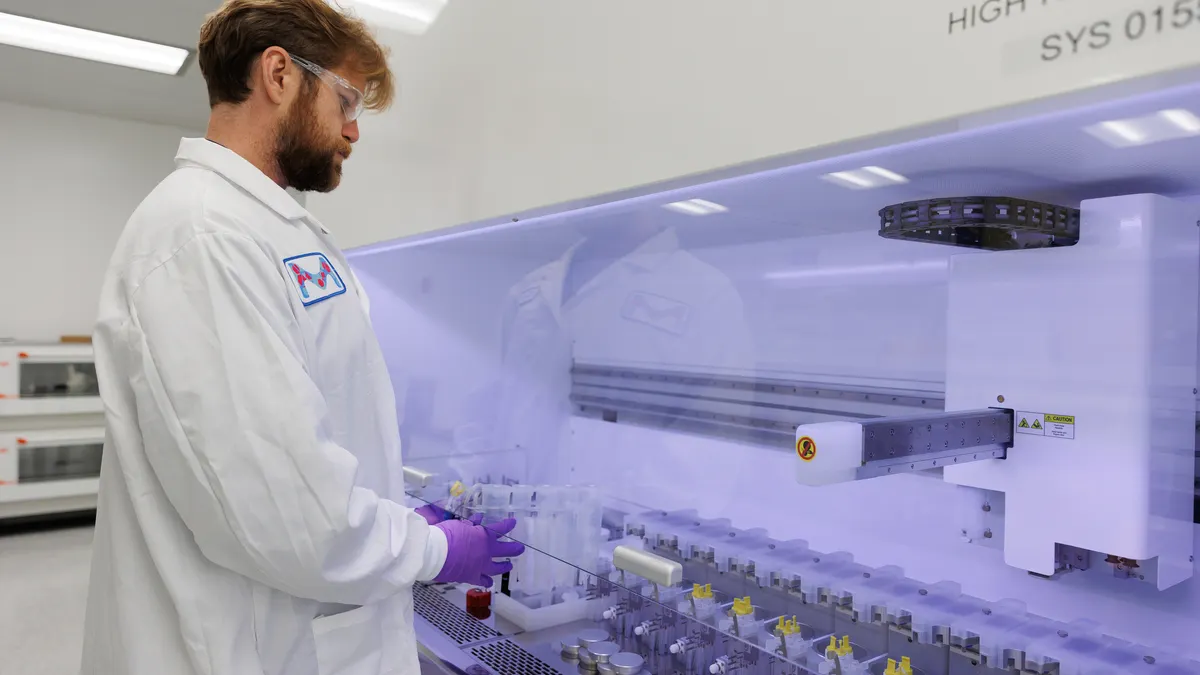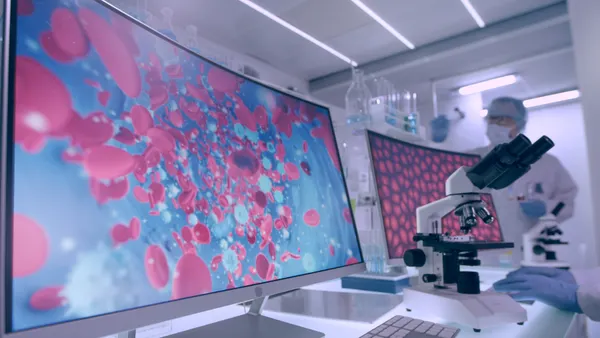Cell and gene therapy innovators are after “a gene and a dream.”
Those are the words of Hugh Murray, Senior Scientist, Upstream Process Development with MilliporeSigma, whose team works with clients to take cell and gene therapy from concept to reality. At the company’s 202,000 square-foot production facility in Carlsbad, California, the CDMO team develops and manufactures processes for viral vector-based therapies. These processes utilize scalable equipment and instrumentation, predictive modeling and automated robotics to maximize throughput while minimizing uncertainty and risk.
“We employ a development strategy designed to reduce the unknowns so that cell and gene therapy innovators can develop robust processes efficiently, allowing them to gain an edge on timelines and enter into clinical trials quickly,” says Murray.
To keep projects on track, Murray shared the following advice to reduce risks in cell and gene therapy development and manufacturing.
1. Consistency is key from start to finish.
From the earliest stages of development, it’s critical to think about the end goal and work backwards so that every process unit operation is repeatable and scalable. That starts at a project’s initiation at MilliporeSigma’s viral vector CDMO facility, where the pilot scale lab is an extension of the process development lab. This allows for well characterized and consistent performance in every step of the process across scales. “With the development and manufacturing teams under the same roof, a client’s project can transition from early stage through clinical and commercial without having to leave the facility,” says Murray.
Throughout the project’s development journey, the process development, MSAT, and manufacturing teams work together intensively to study and learn all about the process as it scales up, and all team members are available to lend expertise throughout the lifecycle. “Having the teams in the same facility builds a lot of confidence in the process through ongoing interaction and exchange and enables a smooth and effective project transition to GMP manufacturing,” says Murray.
In addition, Murray says it’s important to use identical equipment in development and manufacturing. To prevent unexpected delays, everything from pH meters to bioreactors are mirrored between the pilot production lab and the manufacturing facility. “In our viral vector facility, we utilize mirrored equipment in both development and manufacturing,” says Murray. “This helps minimize production delays and accelerates tech transfer for our clients and helps to ensure process and product consistency.”
2. Predictive modeling can minimize risks before they even arise.
Taking a data-driven approach, such as leveraging design of experiments (DOE) methodology, allows Murray and his team to characterize processes in a systematic fashion, ultimately building a bench-scale predictive model that can be used by clients to make critical decisions about their process before clinical material is generated. “Predictive models are very useful to clients because you’re able to get a good understanding of what the process performance is going to look like before investing in costly large-scale production runs,” says Murray. ”It is an invaluable tool to sit with clients and present the critical control elements of the process at our disposal. Understanding how varying parameters can allow for different outputs, such as yield and product quality, allows the client to tailor the process that’s the best fit for their goals.”
Murray adds that a predictive model can also highlight “danger zones,” so that they can anticipate potential challenges to avoid when scaling the process. “For example, if we find through our DOE studies and subsequent predictive modeling that low pH can negatively impact a critical product quality attribute of the viral vector,” says Murray, “We know that we must add tight process controls for that parameter into the process.” Demonstrating to regulatory agencies that cell and gene therapy innovators understand their process is critical to regulatory filings, Murray adds, and this approach ensures that an understanding of quality is built into the process from inception.
3. Success depends on advanced, high throughput viral characterization capabilities.
Again, it’s essential to start with the end in mind when developing and manufacturing cell and gene therapy products. “You should have an understanding of what your target product quality profile is and work backwards,” says Murray. At MilliporeSigma, Murray and his team quickly characterize those qualities using a statistical approach, as well as automated robotic tools that enable one scientist to execute experiments at a rate that would traditionally take five scientists or more. “Automating routine workflows takes a lot of work off our hands. And it also allows us to quickly conduct tests with a high degree of replication, reducing process development timelines,” says Murray. “That allows for a deeper understanding of our innate process variance and allows us to screen for a lot of different process iterations at once.”
By testing early and often, the scientists understand exactly what they’re producing and can determine if it’s going to meet the end goal. “Utilizing high-throughput and automated workflows provides a valuable set of tools to ensure that we’re going to be able to deliver success to the client,” says Murray.
Chasing “a gene and a dream” always comes with risk. However, a seasoned CDMO partner, like MilliporeSigma, can help identify and minimize those uncertainties. When that happens, cell and gene therapy innovators can enter into clinical trials feeling more confident in their therapeutic, says Dayne Callum, Senior Scientist, Downstream Process Development with MilliporeSigma.
“Working with us, clients will already know their quality attributes are well-characterized and that there aren’t going to be any surprises as they scale up and transfer to manufacturing,” says Callum. “We tell clients that we are here to focus on the manufacturing for them so that they can focus on the cure.”
Learn more about MilliporeSigma’s viral vector CDMO services.
MilliporeSigma is the U.S. and Canada Life Science business of Merck KGaA, Darmstadt, Germany.










